Buy Premium Quality Kerala Spices
Delivery
Online Shop
Discounts
Easy Pay
Security
Our Products
-
Sale!
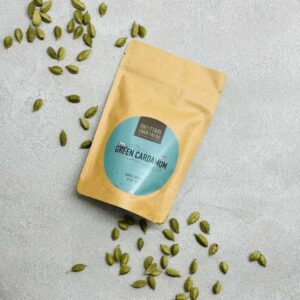
8MM Cardamom
₹279.00 – ₹2,849.00 Quick ViewBuy NowSelect options -
Sale!

Biriyani Spice Pack
₹749.00 Quick ViewBuy NowAdd to cart -
Sale!
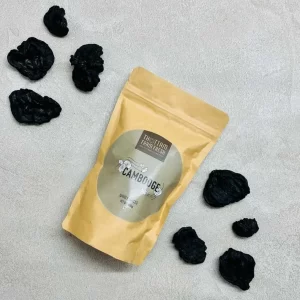
Brindleberry / Cambodge
₹199.00 – ₹649.00 Quick ViewBuy NowSelect options -
Sale!
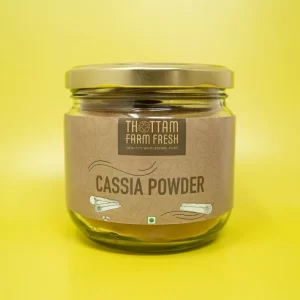
Cassia Powder
₹199.00 Quick ViewBuy NowAdd to cart -
Sale!
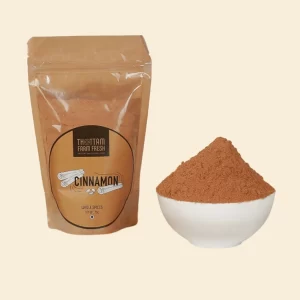
Ceylon Cinnamon Powder
₹349.00 Quick ViewBuy NowAdd to cart -
Sale!
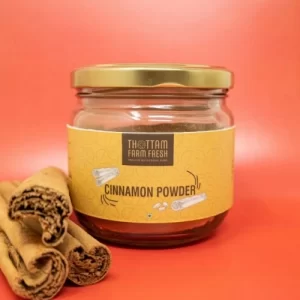
Ceylon Cinnamon Powder
₹349.00 Quick ViewBuy NowAdd to cart -
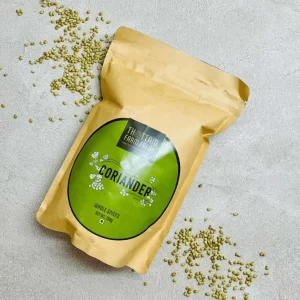
Coriander
₹99.00 – ₹189.00 Quick ViewBuy NowSelect options -
Sale!
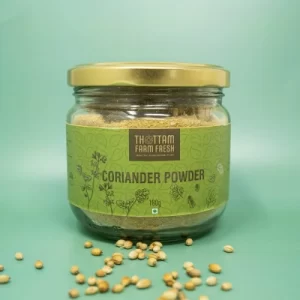
Coriander Powder
₹149.00 Quick ViewBuy NowAdd to cart
Why is Kerala known as the land of spices?
Kerala takes pride in its identity for being one of the world’s leading cultivators of the best quality spices in the world. Throughout the past few centuries God’s own country has secured itself as a leader in the trade of a variety of spices both in terms of quality and quantity. The different types of appropriate soil and favourable climatic conditions is ideal for the growth and cultivation of several trademark spices.
Kerala is a land of abundant natural wealth and beauty. The cultivation of several unique spices in the hills and villages of Kerala attracted several foreign travellers to Kerala who wished to study and discover the cultivation methods and conditions that made Kerala famous for its spice profile. The growth of such a large number of valuable spices is aided by the constant rainfall available throughout the year, large number of natural water bodies including rivers, lakes, dams which supported the thriving agriculture sector and solidified itself as an agrarian state.
Kerala’s colourful history of spice trade can be pinpointed to thousands of year ago when in 1498, Vasco Da Gama landed on the shores of Calicut, India by discovering an alternative route that helped assert control of the spice industry by the Portuguese.Kerala was gaining popularity because of its monopoly over spices and cemented their place as the base of the world’s spice trade. One of the main reasons for western powers colonizing India was to mainly control the spice trade over in Kerala Several empires and countries have taken control of Kerala to assert their power in influencing the spice trade and the world economy as a result.
The growth and trade of spices play a significant role in furthering Kerala’s economy due to its large consumption rate locally as well as their global markets which brings in a large amount of revenue to the state. The world has granted Kerala with the honour of being the spice bowl of the world with no country producing as many varieties of spices as India and Kerala being one of the main distributors of colour, fragrance and flavour to the rest of the world for many centuries. It is a matter of integrity and honour for Kerala that a large share of the world’s total spice trade is being contributed to the small state. Some of the best spices Kerala produces include Pepper, Clove, Cinnamon, Ginger, Cardamom, Nutmeg, Turmeric, Fenugreek etc.
Kerala spices are widely used for their medicinal, seasoning, and preservative effects. The flavour profile in the typical Indian households consists of turmeric, black pepper, clove, red chilli, coriander, cinnamon, etc which holds a staple and important position in Indian and Kerala cuisine. Spices like ginger, fenugreek, and turmeric have been used as medicines since ancient times. Spices like cloves, cardamom, etc also act as mouth refreshing agents.
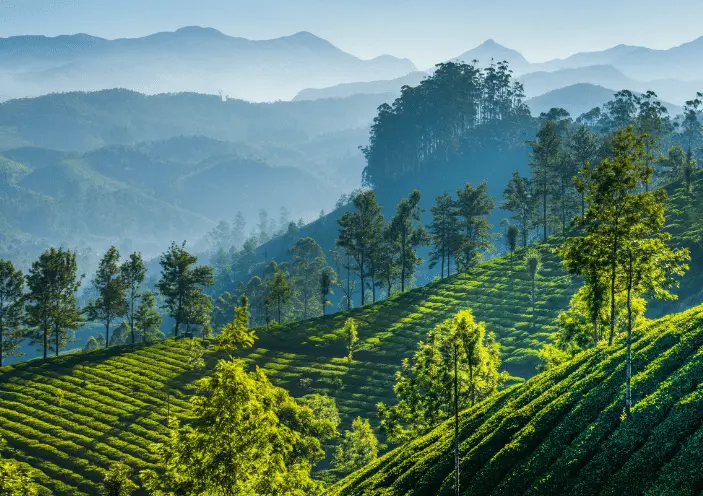
What are the various spices grown in Kerala?
Kerala is responsible for the palate and cuisine of the entire world. Hence growth, cultivation and trade of spices is one of the major strengths of the Kerala economy. Natural conditions such as the heat and humid climates as well as the annual distribution of rainfall and the different soils and regions such as the deep red and laterite soils with well drained forest loams provide favourable conditions to grow spices throughout the state. Kerala is known for its signature spices such as:
Black Pepper
Black Pepper, also known as “the king of spices” is the most cash earning crop among the many spices that Kerala exports to other countries. Considered as one of the supreme peppers in the world, these berries are grown in the Piper nigrum trees found in the Western Ghats of Kerala.
Black Pepper is a tropical plant that grows as a vine and needs the support of the other trees in the ecosystem for its growth. It requires a minimum of 10° and a maximum of 30°C consistent temperature. Adequate and well-distributed rainfall ranging from 200-300 cm also helps promote its growth. It thrives on well-drained loamy soils, overlaying the hill tops of the Western Ghats. It can also be grown on red and laterite soils with careful planning and favorable conditions. It can also grow from almost sea level to an altitude of 1,200m.
It is popularly used as a source of flavoring in several cooking styles all over the world. It is coated onto meats to add depth in their taste. It is also added to popular beverages such as tea to enhance their flavor. It is also a popular ingredient in the food industry in items such as sauces, spice blends and salad dressing to incorporate a tinge of spiciness within their product. It is the most common spice used for seasoning across the world due to its versatility and its importance in lending its signature flavour to several dishes in different culinary profiles.
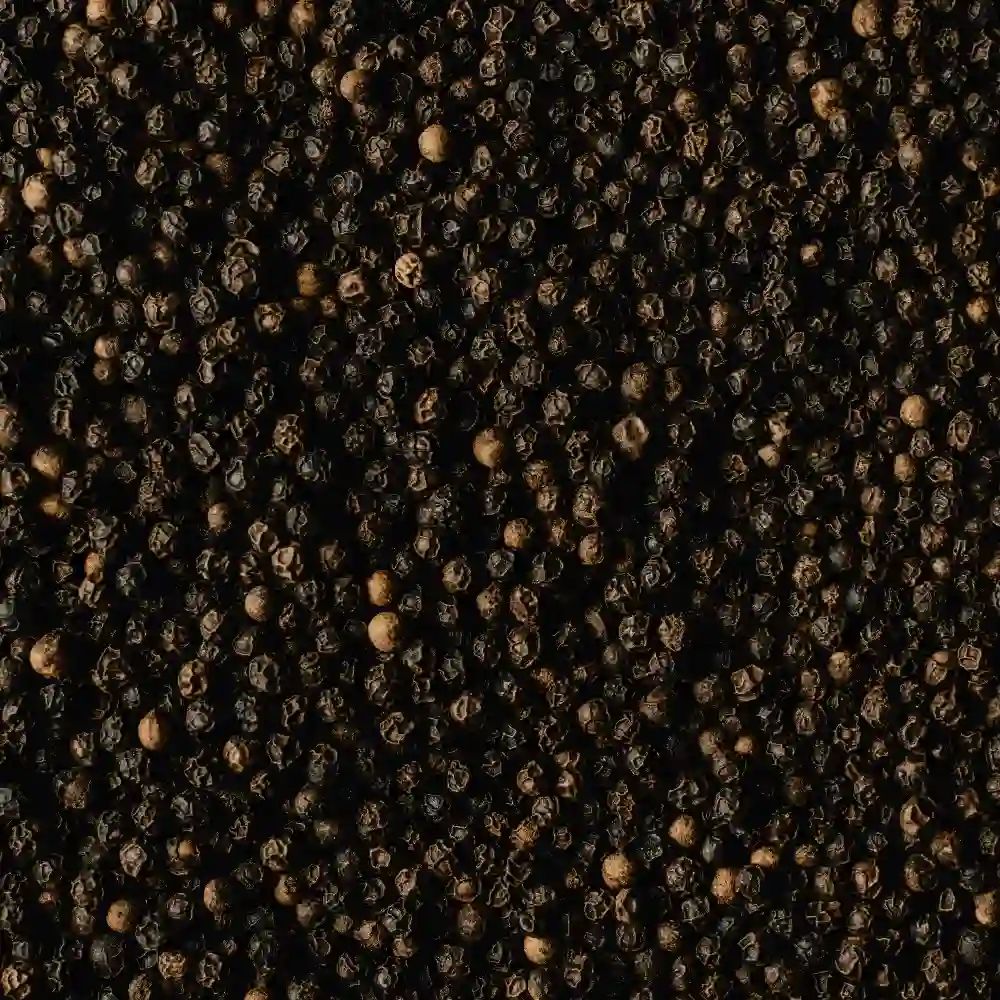
Black Pepper contains a variety of nutrients such as flavonoids, Vitamin A, Vitamin C, and carotene which protects against several diseases. Studies have shown evidence that black pepper is beneficial in lowering cholesterol, improves brain functions, boosts nutrient absorption and offers pain relief to several common aches and pains.Black Pepper is an effective tool in improving digestive health as they secrete hydrochloric acid which eases indigestion and stimulates the stomach in digesting protein. Due to its antibacterial properties, they are used to cure a cold, cough and chest inflammation. Its outermost layer contains phytonutrients, which helps to break down fat cells, and also increases metabolism which helps in enabling weight loss in an individual. Black Pepper is an effective spice in treating and improving one’s health.
India is the second-largest producer of black pepper after Indonesia. Its distribution is highly concentrated in the southern states such as Kerala, Karnataka and Tamil Nadu. Even though it is produced in almost all districts of Kerala, the largest producer of Black peppers comes from the Kannur, Idukki and Wayanad districts followed by the other states. About one-third of the total production of black pepper in Kerala is exported to foreign markets. India exports black pepper to around 80 countries in the world.
Cardamom
Cardamom is known as the “queen of the aromatic spices” and is mainly used for flavouring dishes in various cooking styles and as medicine. Green Cardamom is used as a key ingredient in Indian and Middle Eastern cuisines for savory recipes.
It grows optimally in high heat and humid conditions with temperatures ranging from 15°C and 32°C. It also requires a fairly distributed annual rainfall of 150-300 cm. Deep red and laterite soils with plenty of leaf mold and well-drained forest loams are the ideal soils suited for its consistent growth. Tropical rain forests with an altitude of 100-1600 meters above sea level are the best environment for its sustained growth. It is a shade loving plant and is therefore grown under shady trees.
Green cardamom has an aromatic and piney aroma while comprising a spicy and minty flavor. It is added onto items such as pastries, puddings, poultry dishes, and beverages like tea and coffee to add depth to its flavor and to make the most of its medicinal properties. Cardamom has also been identified to treat and improve one’s health. Cardamom has found to improve respiration and reduce blood pressure levels. Cardamom also aids in maintaining and improving bone health. Cardamom is also mixed in with beverages such as tea and coffee to improve one’s oral health. Consuming cardamom in moderation reduces cholesterol levels and lowers blood sugar levels in one’s health.
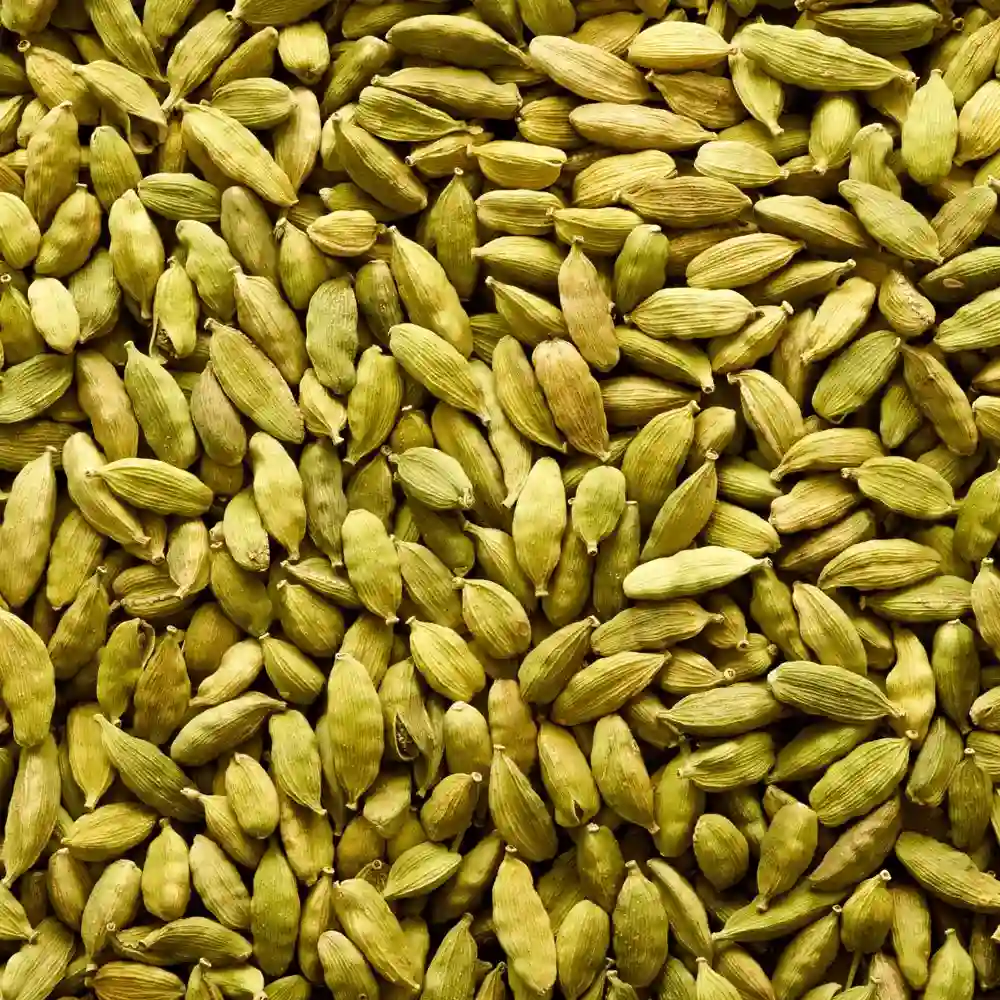
India produces about 90% of the world’s total production of cardamom. Kerala, Karnataka, and Tamil Nadu account for 53, 42, and 5 percent of the total production of Cardamom in India. In Kerala, the crop is largely grown in Idukki, Palakkad, Kozhikode, and Kannur. About half of the production of India is exported to around 60 countries in the world. India is currently the second largest producer and exporter of cardamom after Guatemala who has accelerated the production and export of cardamom starting from the mid- 1980s.
Cloves
Cloves are the most well-known spice in the group of spices known as “flower spices,”. The tree from which Cloves are harvested has the scientific classification “Syzygium aromaticum” and is indigenous to the Moluccas in Indonesia.
Cloves are propagated through seeds during the summer months of June-October. Cloves are used in various forms all over the world. Cloves can be cultivated across most parts of the country but it is mainly cultivated in the red soils of Kerala due to its ideal weather conditions. Cloves thrive best in a warm humid tropical climate with annual rainfall ranging from 150 to 250 cm. It also grows well when it is above sea level up to an altitude of 800-900 meters. Clove plants also grow optimally in partly shady regions. Cloves grow ideally in rich loamy soils in wet tropical areas. Cloves can also grow in heavier red soils but in both cases, they require good drainage for better quality and yield.
Cloves have a warm and pungent aroma while maintaining a strong sweet flavor. It is also an excellent flavoring agent for savory dishes as well. Cloves are used in various forms all over the world. They are mainly used for culinary purposes. Their sweet flavor is used to enhance food items such as sweets, cakes, cookies and add depth to items such as sauces and soups.
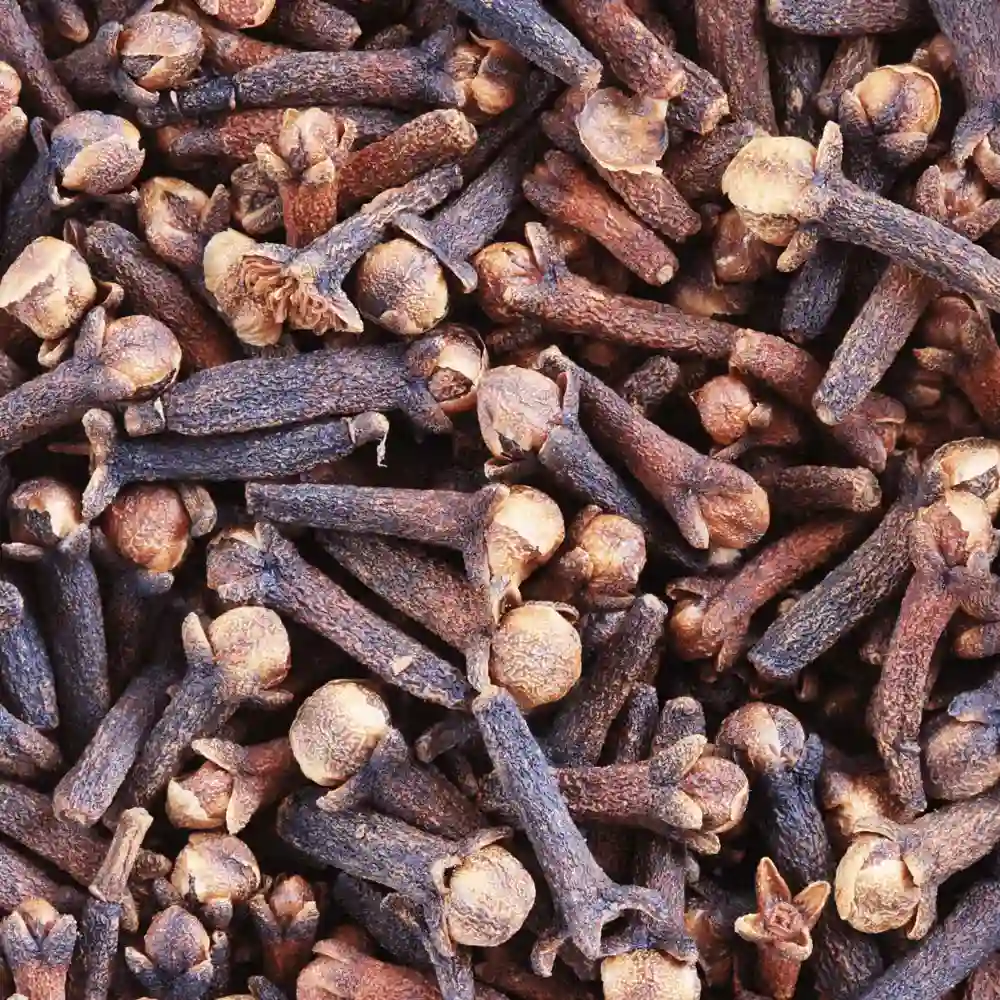
Cloves contain a variety of nutrients such as Fiber, Vitamin K, Vitamin C, manganese and Vitamin E. Cloves are an effective tool in improving digestive health as they secrete digestive enzymes which eliminates bloating and indigestion. The compound eugenol present in cloves helps in promoting liver health by improving liver function, reducing inflammation and decreasing oxidative stress. Cloves can also assist in protecting against and controlling cancer as clove extracts stops growth of tumors and promotes cell death in cancerous cells.
Tamil Nadu is the largest clove producing state in the country with a contribution of around 78% of the total production in India. Kerala accounts for almost 6% of the total production of cloves in the country. In Kerala, the major clove producing states are Kozhikode, Kottayam, Kollam and Thiruvananthapuram.
Nutmeg
Nutmegs are the seed of the fruit from Myristica fragrans trees found in the Western Ghats of Kerala. Malabar Nutmeg is a universally used spice as it is used throughout several cuisines around the world. Nutmeg and mace come from the same fruit.Mace is the dried reticulated “aril” of the fruit and nutmeg is the dried seed kernel of the fruit. The fruit is allowed to mature as it bursts open along the groove exposing the shiny black shell of the seed known as the spice nutmeg. Nutmeg is available in the grounded and whole form.
Nutmeg grows well in regions with an annual rainfall of 150cm or more. They grow optimally in warm and humid conditions. A sea level of upto about 1200m above MSL is necessary for adequate growth. Areas with soils such as sandy loam, clay loam and red laterite are the best type of soil for its production. Both waterlogged conditions and dry climatic conditions are not optimal for the growth of nutmeg. This is the reason why Kerala is the best region in the country to produce nutmeg as the soil and climate prevailing in the hill slopes of the Western Ghats are compatible with yielding a good produce.
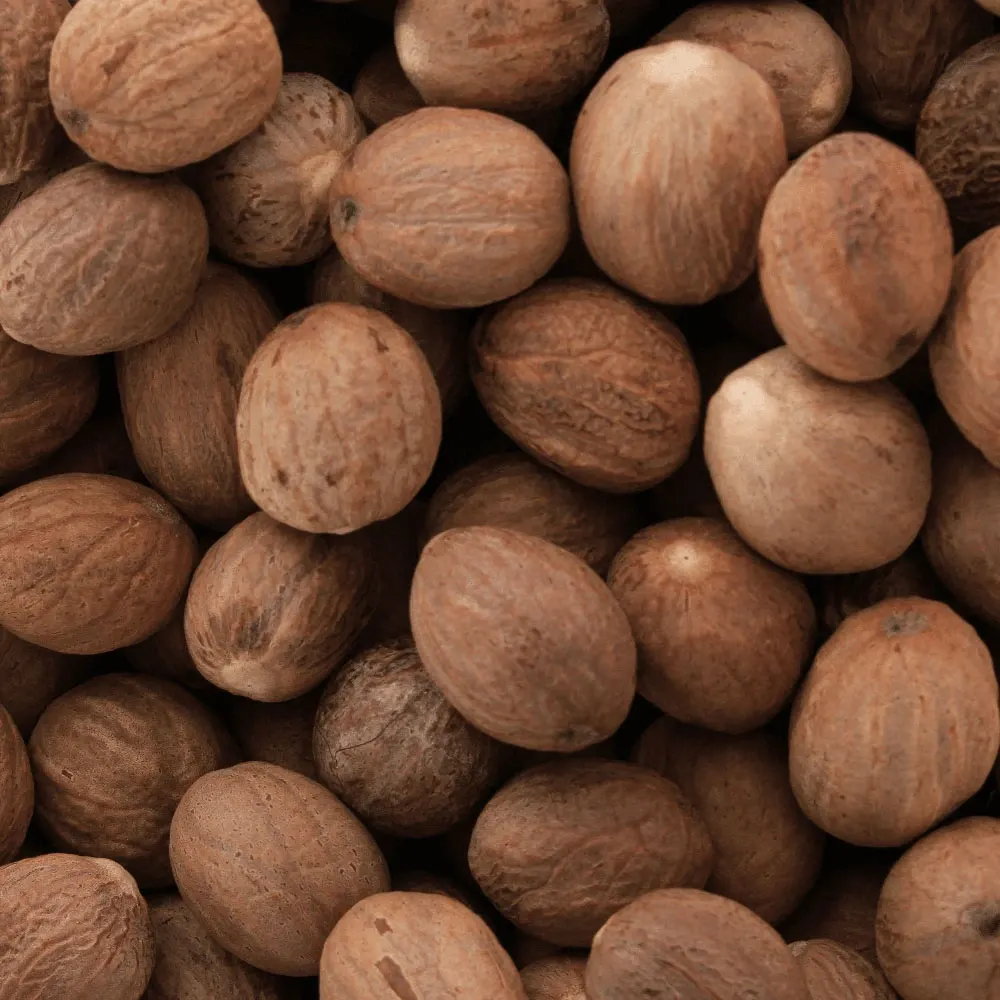
Nutmeg has a warm and fragrant aroma while comprising of a sweet and piney flavor. Nutmeg is used as a key ingredient in sweet and savory dishes to lend its trademark flavor to the cook. It is added onto baked goods such as pie, spice cakes, puddings, and cookies while also adding flavor to items such as stews, sausages, and salads. It is also added onto several beverages such as coffee, hot chocolate, and rum to give a slight kick to the taste buds. Although interestingly too much of nutmeg consumption is not advised as it has hallucinogenic properties.
Nutmegs aids in the treatment of indigestion as it contains dietary fibers that combat nausea and irregular bowel movements. Nutmeg is also filled with antioxidants and anti-inflammatory properties that relieve headaches and pains related to wounds and injuries. Potassium found in nutmeg will help relax your blood vessels and improve blood circulation. Certain compounds present in nutmeg aids in eliminating harmful toxins and lowering blood pressure. Nutmeg has also been predominantly used to improve digestion since the olden days.
In India, nutmeg is mainly cultivated in Kerala and some remote pockets of Tamil Nadu. In Kerala, Ernakulam, Thrissur and Kottayam districts are the major nutmeg producing districts in the state.The annual nutmeg production in India is about 14,000- 16,000 metric tonnes. India is the biggest exporter of Nutmeg after Indonesia and Kerala is responsible for the large majority of nutmeg that is produced in the country.
Nutmeg Mace
The tree from which Nutmeg Mace is harvested has the scientific classification “Myristica fragrans” and is indigenous to the Moluccas known as the Spice Islands of Indonesia. Mace is considered the refined older sibling to the nutmeg. Nutmeg is the seed that is dried, shelled and sold for consumption either whole or ground while mace is the “aril” of the fruit consisting of a fleshy network which is then dried and sold for consumption.
It thrives in its growth in places with warm humid climate and soils ranging from sandy to red laterite surfaces with ample drainage, therefore, making it ideal for cultivation in the tropical landscape of Kerala. Nutmeg mace can be grown up to an elevation of 1000 m 150- 250 cm of rainfall annually.
The aroma of nutmeg mace is mildly nutty and warm while the flavor is predominantly sweet with a hint of strong bitterness towards the end. Mace is typically used in high-fat foods such as sauces, stews, cheese dishes, and meat products. Mace is also used for baking desserts such as puddings, donuts, cakes, sweet potatoes, pies. The sweet and savory notes of mace combine well with predominantly sweet dishes such as desserts and meat based dishes due to the contrast.
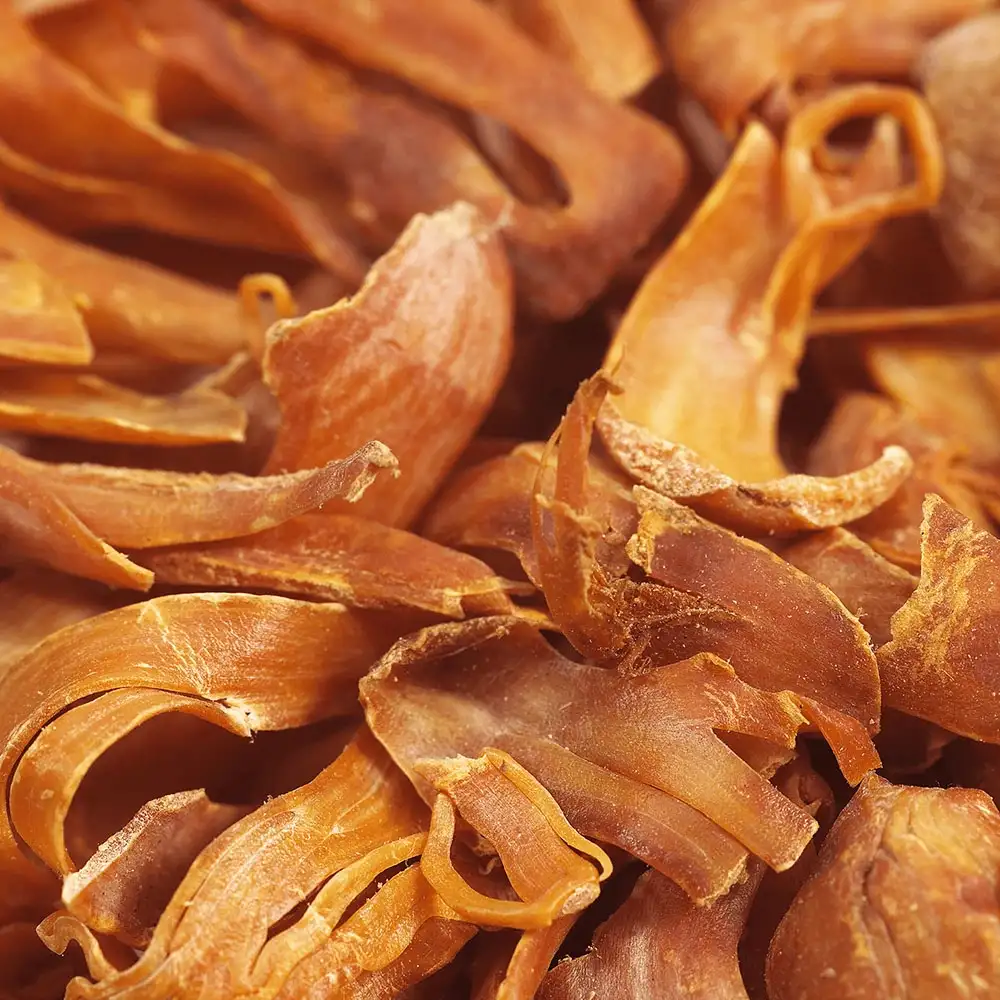
Mace is also a key component in pickling various spices due to its preservation properties. It is also commonly used in cosmetic products and alternative medicines due to its numerous health benefits. Mace is an excellent source to control and reduce blood cholesterol levels. They also promote digestion and regulate blood sugar levels. Mace has also been found to lower one’s appetite and is often consumed for its weight loss properties. Consuming mace in moderation also improves one’s blood circulation.
India is responsible for 5% of the world’s total production of nutmeg mace. Nutmeg trees are easy to cultivate in the southernmost state of Kerala and therefore the state is responsible for the large majority of production and export of mace in the country. Idukki, Munnar, Thekkady, Ernakulam are some of the regions in Kerala responsible for the production of Mace.
Cambodge
Native to the Western Ghats of Kerala, the Cambodge or the Malabar Tamarind as it is more popularly known is sourced from the Garcinia Cambogia trees. Cambodge is a tropical fruit which fares in green, red and pale yellow in appearance. The fruit is ripened and then removed from the vine, uprooted and left to dry in the sun. The dried rind is predominantly used as the condiment as we know it today.
Cambodge grows well with temperatures between 25°C to 30°C and regions with an annual rainfall of 2000mm to 3000mm. It grows optimally in most types of soil such as acidic and lateritic soils. The only requirement is that the soil should be well drained for cultivation. Cambodge grows best in warm and humid conditions where the yield can be maximized.
The aroma of cambodge is complex and best described as harsh and smokey. Cambodge is typically used to enhance flavor to dishes. It contributes a pleasant sourness with hints of sweetness and a slight trace of smoke. It is also usually substituted in place of tamarind in dishes as they share the same properties. It is also used as a souring agent in industry grade products. Particularly in the southern region of India, it is used to enhance and highlight flavor in the curry style of cooking. The dried rind of Cambodge along with salt is used in Colombo curing which is a pickling process for fish and is practiced by the fishermen down in the South.
Cambodge has been receiving acclaim from all over the world for its health benefits. The Hydroxycritic acid found in the fruit is an active ingredient in anti-obesity drugs. Moreover, it is found to reduce stress levels, blood sugar levels and regulate cholesterol.
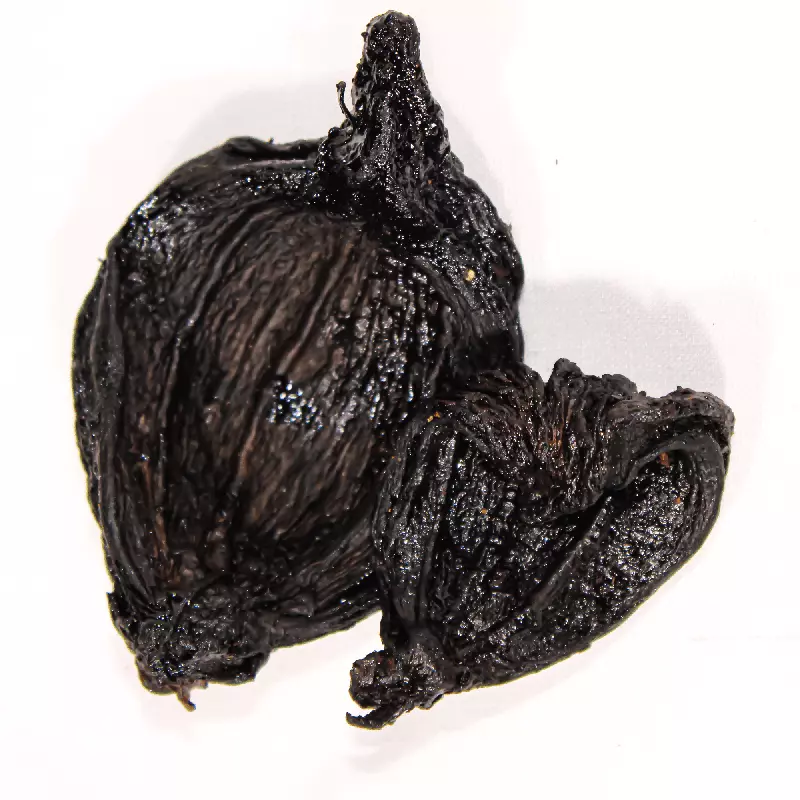
Cambodge is mainly produced in Kerala in the country. Kerala is also responsible for the large consumption of the spice within the state itself. Idukki, Munnar, Ernakulam and Thiruvananthapuram are the major Cambodge producing districts in the state.
Cinnamon Sticks
Cinnamon is possibly the world’s most applied flavor as it is used in flavoring sweet and savory items alike. Cinnamon is the dried inner stem bark of the “Cinnamomum Verum” trees found in the Western Ghats of Kerala. Cinnamon produced in the southern regions of India and Sri-Lanka is the only true cinnamon, scientifically and historically speaking. Other variants of cinnamon are technically cassia bark. The spice comprises of the dried inner bark is brown in color and can be further subdivided into a range of products such as quills, chips, and oils for commercial use. Cinnamon is one of the oldest spices in the world as history has tracked the consumption and trade of the spice since time immemorial. Several historical texts has recorded the use of Cinnamon at Egyptian funerals and the spice has also been mentioned in the Holy Bible.
Cinnamon can adapt to a variety of climatic conditions. It grows well at an altitude of about 1,000m and rainfall of about 200-250 cm annually. Cinnamon is cultivated as a rainfed crop as it is a hardy plant. Cinnamon is versatile and can be grown in various soils varying from nutrient rich loamy soils to poor sandy loams. Cinnamon trees reach upto a height of 6-15 metres and are medium-tall trees in their own right.
Cinnamon has a fragrant and woody aroma while the flavor is strong and sweet. It is probably the most commonly used baking spice as it incorporates well with cakes, cookies, and desserts.
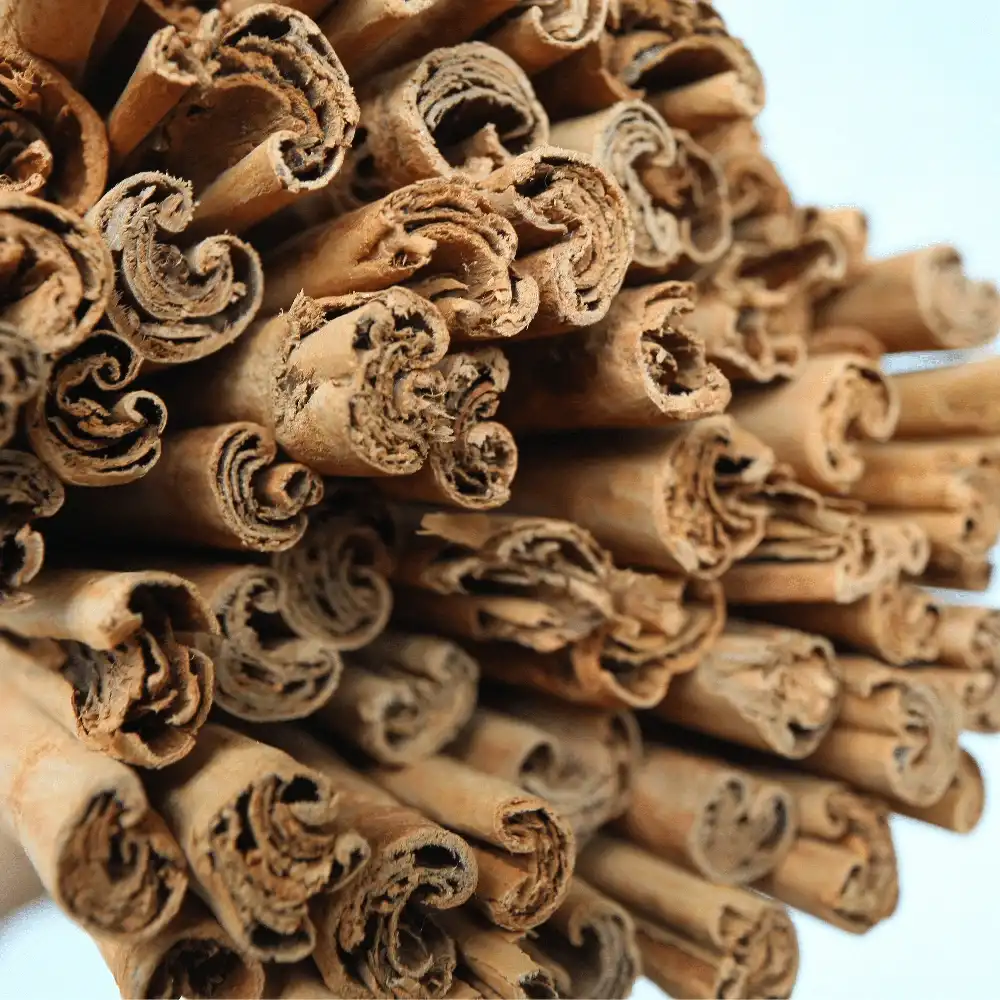
It is also regularly paired with apples and other fruit-based dishes to add depth to the dishes. It is also added onto popular beverages such as coffee, teas and cocktails for their vibrant flavoring. It is also regularly used in savory dishes such as preparations of lamb and sweet chicken to lend a tinge of sweetness in combination with the meaty flavor.
Cinnamon is thought to have several medicinal and healing properties. It has been used in Chinese medicine since ancient times. The distinct smell and flavour of cinnamon comes from the essential oils consisting in the bark called cinnamaldehyde. This compound has antiviral, antifungal and antibacterial properties which helps protect the body against common diseases. Some studies have suggested that the consumption of cinnamon helps reduce blood pressure. Cinnamon also contains prebiotic properties that promote the growth of beneficial bacteria that help repress the growth of pathogenic bacteria. This helps improve gut health in an individual. Cinnamon also improves glycaemic control which helps in controlling your sugar intake and managing type-2 diabetes. Cinnamon is also used as a remedy to relieve any digestive discomfort you experience.
Cinnamon is widely consumed throughout the country and Kerala is the major hub for production of the spice. The climatic conditions and various soil types in the Western Ghats of Kerala is suitable for the growth of the spice. States in Kerala such as Idukki, Ernakulam and Kannur are the major contributors of the production of Cinnamon.
Turmeric
Turmeric is one of nature’s most vibrant spices. It is grown from the “Curcuma longa” trees found in the Western Ghats of Kerala. Turmeric has been used as a spice and medicinal herb since the past.Turmeric is highly valued for its flavor and color. Turmeric is the rhizome of the Curcuma longa, a herbaceous plant which is then boiled, dried, cleaned and polished to extract the renowned spice.
Turmeric grows best in a well drained clayey or sandy loam rich in humus content. It can also grow on different soil such as light black, red loams, clayey loams and ashy loams.. Turmeric can be from grown from sea level to upto 1500 m in the hills. They grow best at a temperature range of 20-30 °C with an annual rainfall of 1500-2250 mm per annum. It can also be grown as an irrigated crop.
Turmeric has an earthy and musky aroma while comprising of a sour and slightly bitter flavor. Turmeric plays a pivotal role in the Indian style of curry cooking as it is an essential ingredient to most masalas and curry powders. It has also become a staple for soups, risottos, cakes, pickles, and cheese. It is also added onto several nonalcoholic beverages such as tea, lemon water, and tonics to add a dose of spiciness. It is also exclusive to the food industry and the clothing industry for its coloring properties. Turmeric is also a sign of prosperity and fertility, therefore, is used in celebrating several religious ceremonies across India.
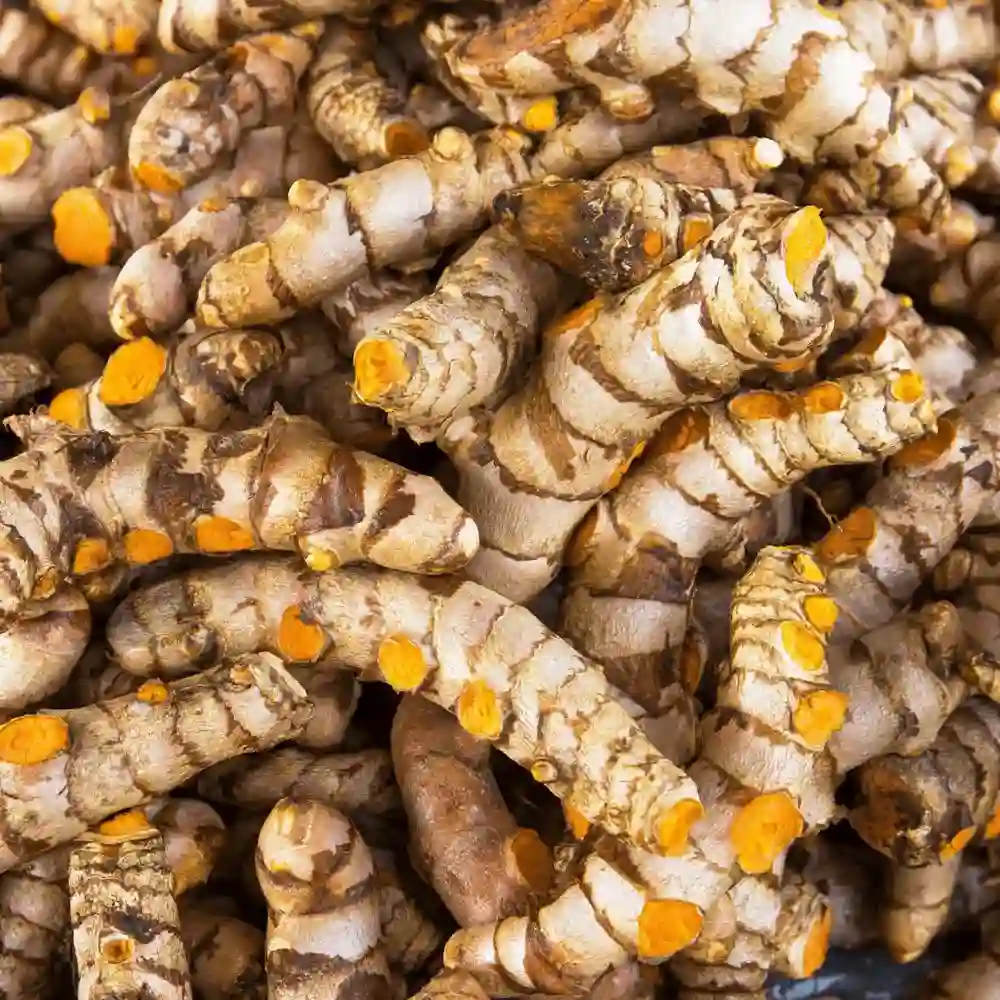
Turmeric is used as a mood stabilizer as the compound curcumin in turmeric boosts the brain building protein BDNF and also secrete serotonin and dopamine-two chemicals that impact happiness in the brain. The compound curcumin has strong anti-inflammatory properties which protect the body against foreign microorganisms and repairs damage. Curcumin’s antiinflammatory properties can be rivalled with pharmaceuticacl drugs but without the side effects making it an effective weapon against several chronic diseases such as cancer, Alzheimer’s, etc. Curcumin is also effective when it comes to preventing or regulating heart disease. It improves the function of endothelium which is the lining of your blood vessels and controls blood pressure and blood clotting. Applying turmeric has also been used in different countries and cultures to improve skin health making your skin radiant and healthy while also protecting against harmful compounds.
Turmeric is constantly in high demand in both domestic and international markets. In 2019, with exports equalling to around 194 million U.S dollars, India was the leading exporter of turmeric worldwide. The production and export of turmeric added around 58 billion rupees to the indian economy in 2019. Kerala is one of the major turmeric producing states in India. Turmeric is majorly grown in the districts of Ernakulam, Munnar, Alappuzha, etc from where it is then exported to foreign countries or states outside of Kerala.
Dried Ginger
Dried Ginger is one of the most ancient spices known to man. It is grown from Zingiber officinale trees found in the Western Ghats of Kerala. Dried Ginger is one of the most vital spices used throughout the world in various cultures around the world. Dried ginger is derived from a rhizome and grows underground bearing both roots and shoots. It is available mainly as fresh and dried. Dried ginger is the same as fresh ginger with the only difference being that ginger goes through a drying process.India is the largest producer of ginger in the world producing about 80 percent of the total production.
Dried ginger requires certain suitable conditions to be satisfied for the optimal growth of the spice.It is mainly grown in tropical and sub-tropical climates and requires consistent temperatures ranging from 10° to 25 °C temperature. They also require 125-250 cm annual rainfall for optimal growth. Well-drained sandy, clayey or red laterites, and loams are the most ideal soils for its cultivation. It can also grow above sea level to an altitude of 1,300 m.
Dried ginger has an aromatic and fresh aroma while comprising of a pungent and zingy flavor. Dried ginger is used as a key ingredient in the culinary world for the crafting and preparation of various dishes. It is used in both sweet and savory items such as curries, sauces, biscuits, bread and meat dishes. Interestingly ginger was added to bread dough by the ancient Greeks to treat digestive problems, therefore, sparking the origin of the gingerbread dish as we know it today.
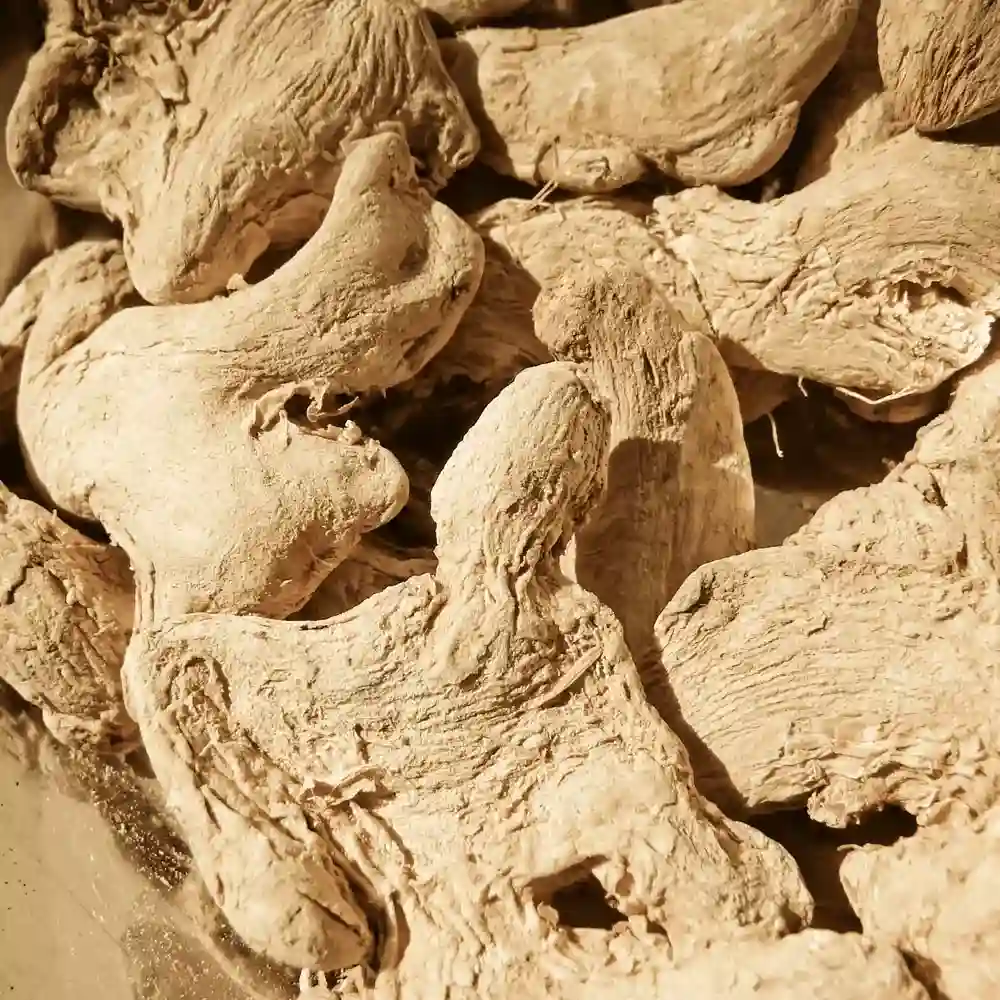
It is also mixed into beverages such as beer, ale, wine, and tea to add its unique flavor and making the most of its medicinal benefits. Dried ginger can be ground and used directly as a spice and also for the extraction of ginger oil and ginger oleoresin.
Dried ginger has been consumed and used as a medicinal remedy to combat several diseases. Dry ginger helps in weight loss by improving digestion which burns stored fat and processes glucose in the blood. Consuming dried ginger also helps reduce hunger and overeating. Research has also suggested that dry ginger helps in reducing cholesterol and triglyceride levels. Dry ginger has also been consumed to offer relief from aches and pains. Dry ginger is also an excellent natural medicinal remedy for controlling high blood sugar in the body.
India is the largest producer of ginger in the world producing about 80 percent of the total production.India is a major exporter of ginger in the international market and accounts for about half of the world’s total trade. 80 percent of the ginger exported from India goes to West Asian countries. 80 to 90 percent of the total production of ginger produced in the country is consumed within the country as it is a staple throughout Indian cuisine.Kerala, Meghalaya, Sikkim, Orissa, Mizoram, and West Bengal are the main producing states and account for nearly 84 percent of the total production of the country. The major dried ginger producing districts in Kerala are Ernakulam, Munnar, Kannur, Kottayam, etc.
How do you select the best quality Kerala spices?
Selecting the best quality Kerala spices online is crucial for enhancing the flavour and health benefits of each meal you prepare in the kitchen. There are four key metrics to keep in mind when selecting high-quality Indian spices. They are:
Picking the right region: Some spices are exclusively cultivated in different parts of the country. It is important to ensure that the spices you pick to purchase are sourced from the very best regions appropriate to the growth of the spice. A little bit of research into the point of origin of the spice will greatly benefit your culinary experiences and enhance the quality of the food you consume.
Picking the right farm: It is important to make sure that the spices that you buy online or from your favourite retailer are sourced from the very best farms in the country. It is important to research the farming conditions and the cleaning processes the spice undergoes before it is sold for consumption.
Picking the best plant variety: It is important to determine what plant variety is most suitable for your purpose be it medicinal, culinary, or artistic. The spice or plant can be used for many different things and it is up to you to research and determine which plant variety is most suitable to achieve your goal.
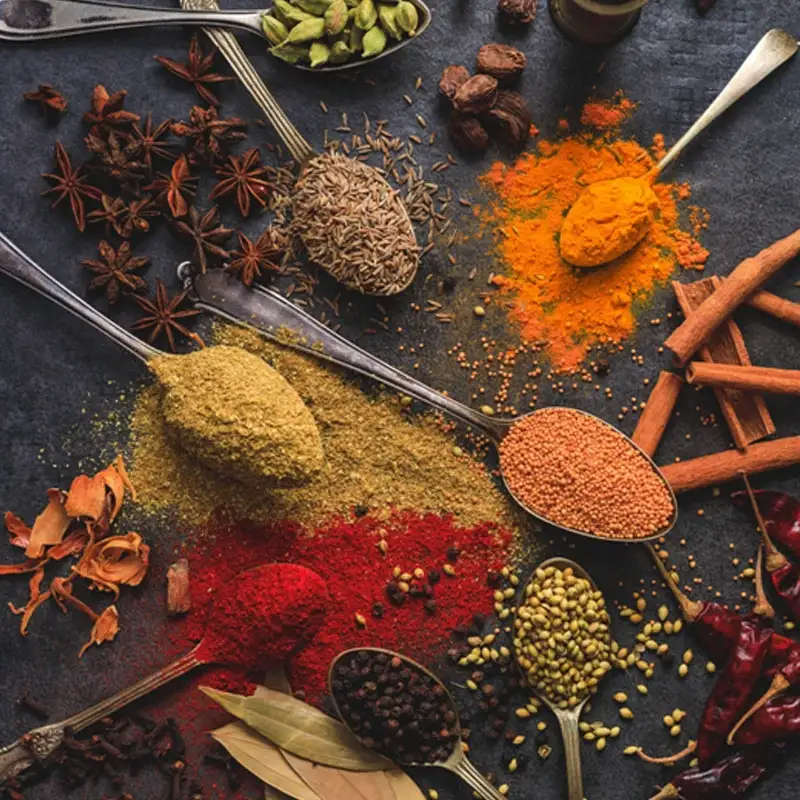
Picking the best processing method: It is important to determine which farms use the most appropriate cleaning and processing method after the cultivation of the spices. The quality of the spices is thoroughly refined after cultivation depending on the cleaning and processing method used. Hence it is important to study what methods work best for a specific spice and making sure that it is being adhered to in the farming process before buying.
Conclusion
It is important to understand and study the spices that you use in your everyday kitchen. It is important to gain knowledge on their history, origin, cultivation conditions, medicinal benefits, etc as it aids in bringing about the best of your spices. It is important to make sure that you are getting the best quality ingredients that money can buy. It is also important to find out whether the spices you buy are coming from authentic farms throughout the country. In this day and age demand is always met with supply but it is important to ensure that you are buying spices grown in authentic farms from the right region that meet the processing and cleaning methods prescribed. The key is to unlock the door to an array of high-quality Indian spices that are packed with aroma and flavour intact. Thottam Farm Fresh is a trusted name in sourcing the nation’s high-quality spices and is perfectly sealed to ensure that these versatile spices reach your kitchen cupboard safe and healthy.
